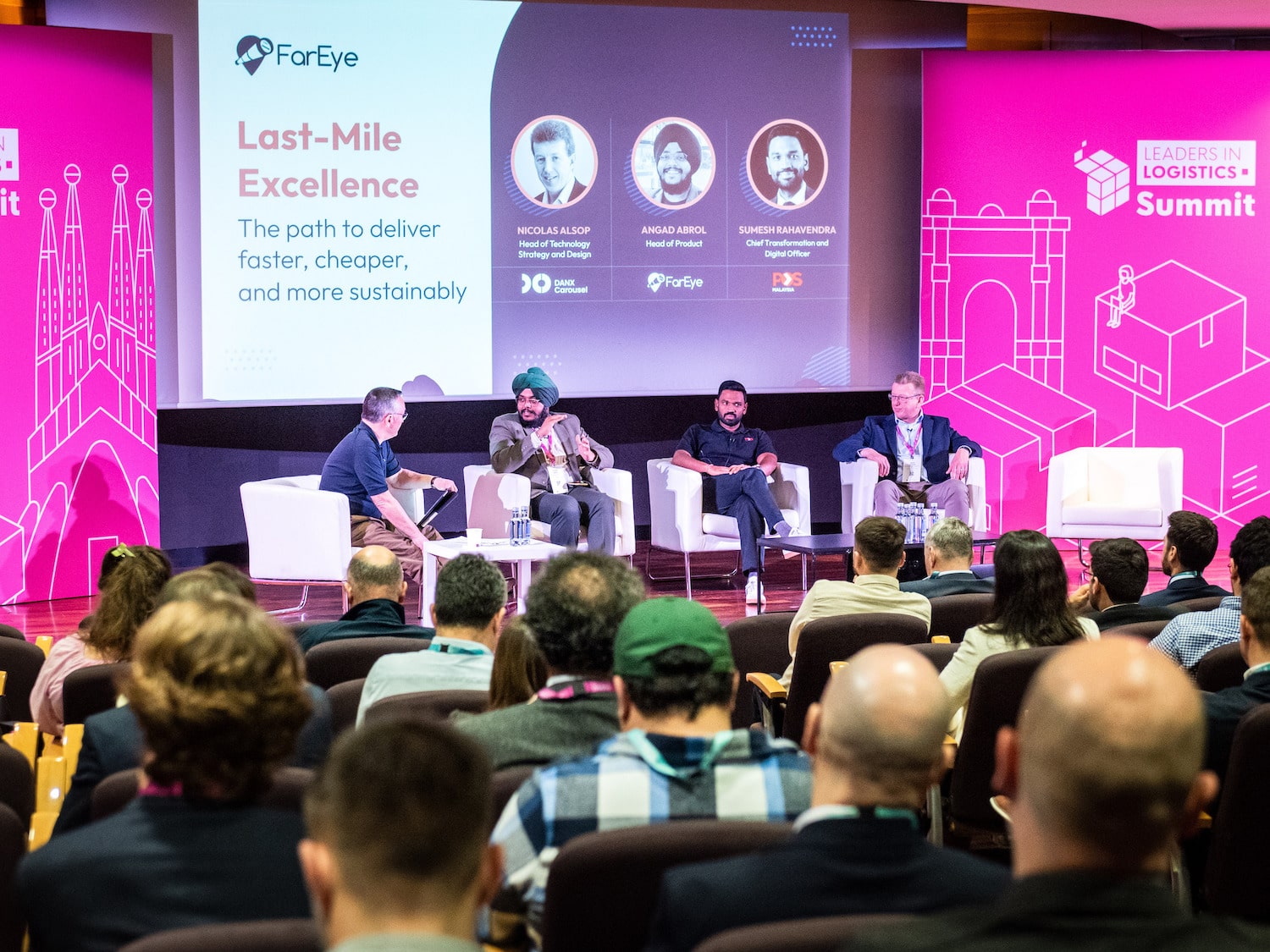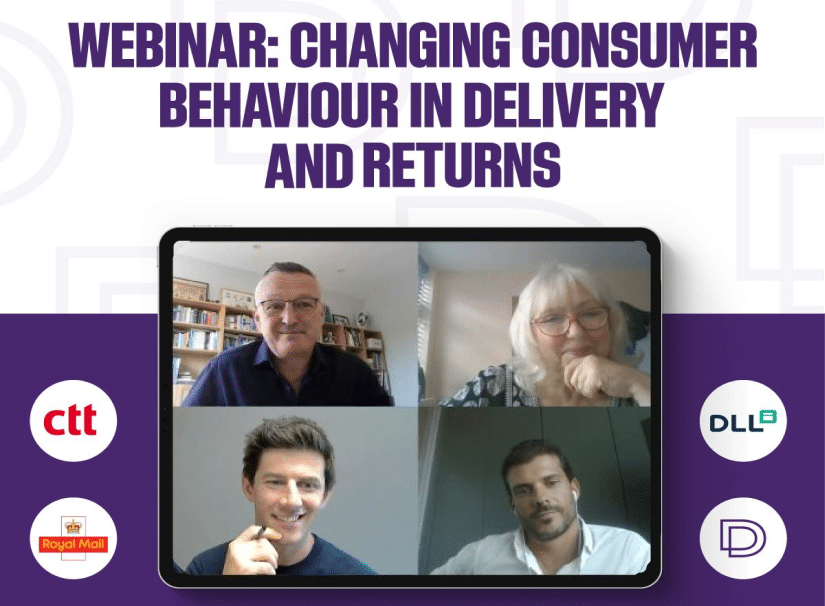Insight / Blog
Leaders in Logistics: Last Mile – A Roundup
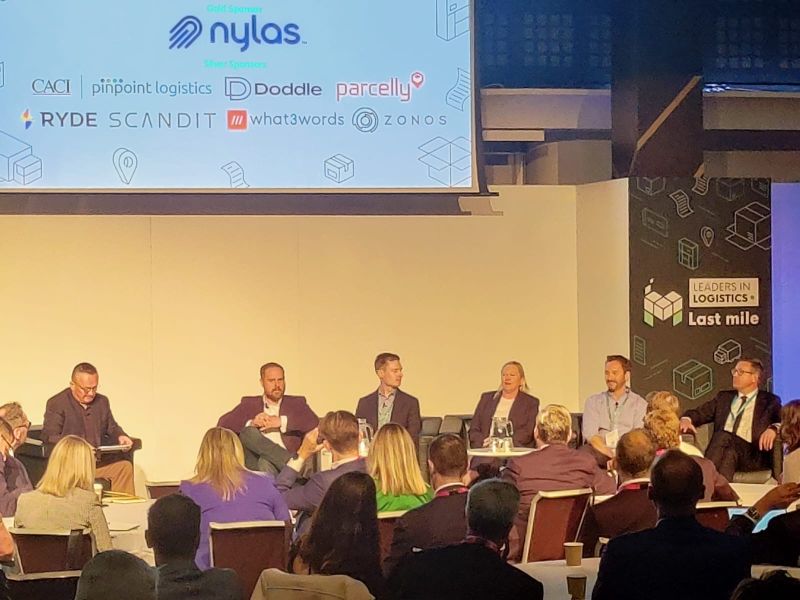
Summary: A deeper look at what’s going on under the surface of event presentations, and where last-mile delivery & returns will be heading in the next few years.
Note: This blog has the insights from the October 22 Leaders in Logistics event. For March 23’s event, click here.
Leaders in Logistics returned to London in October, bringing a coterie of last-mile thought leaders to Twickenham stadium to talk about the challenges of last-mile delivery – albeit mainly through the lens of how well they were all managing those challenges!
While it’s good to see the industry with a buoyant and confidant public face, we dug through our notes from the conference to look at what’s going on under the surface and where we might all be heading in the next few years of last-mile delivery and first-mile returns. Here are our 3 key insights:
App-y days
Owning a channel of genuinely back-and-forth communication and interaction with end consumers was a recurring theme at the conference (and indeed beyond, at our follow-up brunch event – more on that to come, watch this space).
It wasn’t just touched on by almost every keynote speaker, multiple sessions featured audience questions along the lines of: “How can we encourage/respond to [consumer behaviour/preference]”. It seems that many posts and carriers’ response is to use mobile apps to engage with their end users.
Elaine Kerr, CEO of DPD UK, said their app has had 10 million downloads (~15% of the UK population), and focused her talk on the customer-focused services DPD is building its proposition around. Those include Predict (which gives customers a one-hour estimated delivery window) and Follow My Parcel, which adds real-time map-based tracking of the parcel and a number of stops until the delivery.
bpost’s Nick Bond, Head of PUDO, said that the My bpost app has 3 million downloads (equivalent to ~25% of the population of Belgium). For bpost, the app is a crucial way to enable alternative delivery methods such as PUDO, as users can set their default address to a parcel shop or locker. This means anyone can shop anywhere and get the parcel delivered out-of-home – but it does make it harder to make that decision on an item-by-item basis, which still requires retailers to do the work of offering out-of-home delivery locations at the checkout.
Having engaged app users makes it much easier for parcel businesses to offer services, understand consumer preferences, provide better tracking, and to follow-up on “unhappy journeys”. Elaine shared how DPD offered a call to users who left a thumbs-down rating after their deliver to understand any issues they experienced. This level of focus on CX explains DPD’s high NPS score (75), which is well ahead of Royal Mail’s benchmark for home delivery (40).
However, in both examples, a massive majority of potential customers are not yet app users. It might also be easier to encourage app downloads as a postal operator, whose brands tend to be more recognisable and trusted, and often have large shares of the parcel market in their nation.
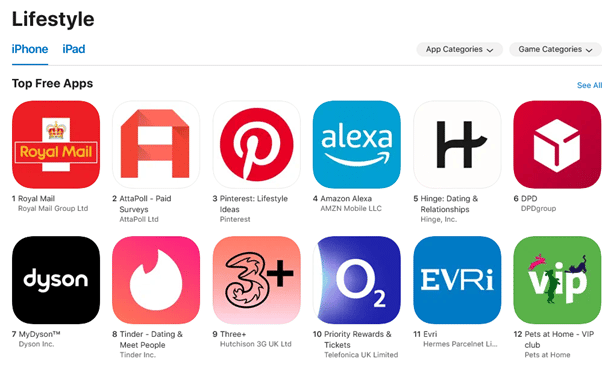
With that said, even in a much more fragmented UK market, three delivery businesses have their apps in the top selection of Apple’s “Lifestyle” app section, so it seems likely that more and more shoppers will directly engage with carriers through these apps.
Stop me if you’ve heard this before, but sustainability is really important?
Okay, so you knew that already, but the extent to which sustainability is becoming a foundational part of carriers’ brand identities, delivery strategies, infrastructure requirements, technology direction and consumer journey is remarkable. With economic headwinds building and some rather dark clouds on the consumer spending horizon, it would be easy to believe that carriers and retailers would rather emphasise cost-effective deliveries, or tempt shoppers with ever faster speed. While those two factors remain highly significant, nobody seems to be ducking below the parapet on sustainability either.
DPD are making sustainability a centrepiece of the brand, with visual hints throughout the website and consumer journey: adding green splashes to highlight when an electric vehicle is delivering the parcel, or building an entire sub-site dedicated to emphasising its green credentials. This helps DPD avoid being brushed off by consumers as “greenwashing”, an accusation many consumers are happy to level at brands they feel are insincere in their approach to sustainability, as Asendia’s UK CEO Simon Batt pointed out in his keynote.
Nick Bond’s presentation focused on the learnings bpost has gone through in the process of building its nationwide out-of-home (OOH) delivery network, with an emphasis on the need for multiple formats to cater to different consumer needs. bpost’s network is comprised of:
-
800 parcel shops
-
650 postal points (in shops)
-
650 post offices
-
700 lockers
This hybridity makes it flexible and attractive to wide variety of customers, which helps bpost scale the network and increase adoption. bpost has a “4S” framework for creating dense and user-friendly networks. Those four S’s are:
-
Slipper (<200m)
-
Sneaker (<400m)
-
Stop (public transit termini)
-
Shop (supermarkets, petrol stations, et cetera)
The different formats also allow for a wide variety of locations, catering to all kinds of customer preference. Nick believes that the share of volume going to OOH locations will grow, because OOH delivery is convenient, sustainable and economic. bpost believe OOH delivery saves around 30% of the CO2 usually associated with a delivery, while it also clearly reduces their cost to deliver.
Two major Belgian cities (Leuven and Mechelen) now receive deliveries totally carbon-free thanks to bpost’s ecozones, an initiative that shows just how powerful it is when carriers reach out to local governments and cities to collaborate on sustainability, and which highlight the power of out-of-home networks to consolidate deliveries without hurting the customer experience.
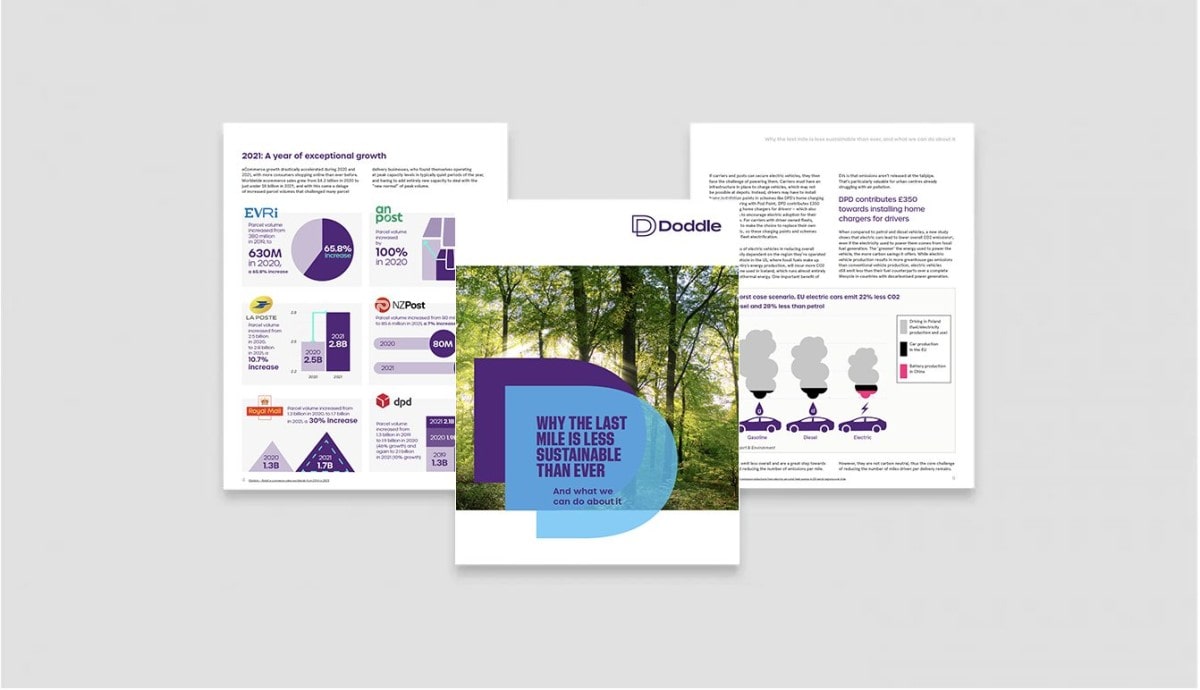
eCommerce has to evolve and logistics is holding it back
As a quick hunt through our blog articles this year will show, Doddle attends a lot of events like this one, and while we always feel there is value and insight to be gained from them, it can seem like a subtly different world being described when we listen to panels and presentations in these contexts. Ultimately, much of the conversation that happens at conferences and expos doesn’t result in much changing from the consumer’s perspective.
eCommerce evolution feels like it is stalling, and we’ve been left on a plateau for the last several years. Of course, the industry adapted rapidly and impressively to the challenges of COVID – but these transformations mainly happened behind closed doors, away from the prying eyes of consumers. From their perspective, what has significantly changed in ecommerce for the last 8 years? Perhaps the journey to the site is now different. Today it’s from TikTok or Instagram on a phone, where 2014’s shopper was coming straight from Google or from their (laptop or desktop) browser bookmarks. But the journey from homepage to product page to checkout basket looks remarkably similar, and the delivery options have also remained fairly static.
Partly, that’s because most carriers and posts aren’t habitually future-focused. The DNA of their businesses makes them excel operationally, optimising their processes to the nth degree – but that doesn’t help them find new ways to serve customers. Similarly, most carriers and posts are not able to consistently deliver high-quality consumer-facing digital products. This is changing (as our earlier point about apps highlights), but there are usually severe limitations to what these apps currently offer. Perhaps the hardest skill of all, which most posts and carriers don’t yet have, is practice at convincing shoppers and merchants to change behaviour.
We know ecommerce needs to change and that it’s not sustainable in its current form. We’re emitting more than ever, and efforts to reverse that are swimming against the tide. Macroeconomic conditions don’t look good for the short to medium-term, which will mark more or less the first point for developed ecommerce markets where growth isn’t something merchants and carriers can take for granted.
It’s hard to escape the feeling that a rationalisation is coming, where profitability and efficiency will become more important metrics than revenue and volume growth. For carriers and posts, success in this environment will require them to evolve beyond their current remits, and provide more support and services to their online retailer clients, so that they can evolve and adapt to grow in these challenging conditions.
For more insights and information from Doddle on how carriers and posts can transform to offer more value to customers, get in touch.
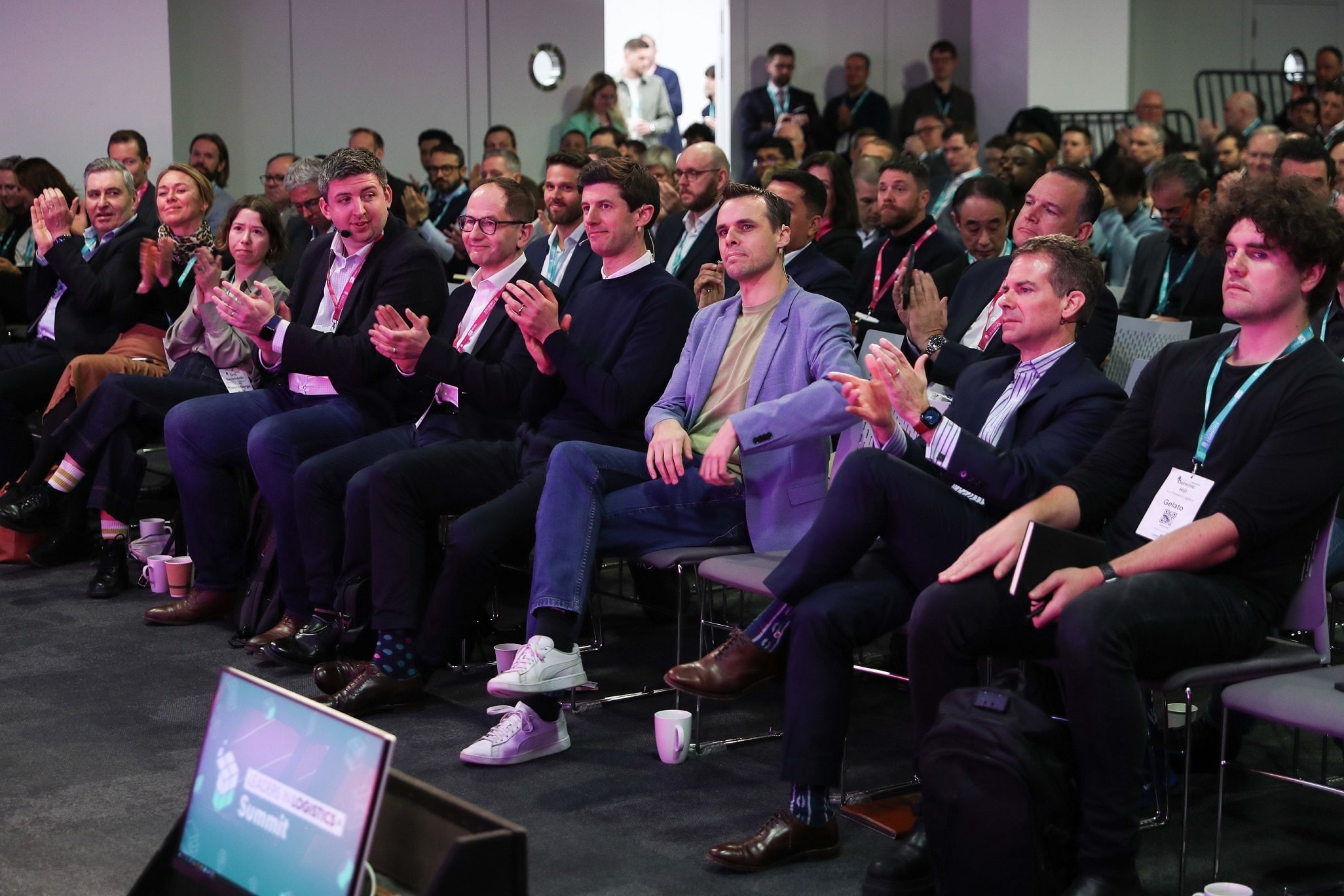
Related articles
Return fees or free returns: why not both?
Debates between return fees or free returns miss the bigger picture: how to address the root issues of returns.
Important lessons from Leaders in Logistics 2024
Leaders in Logistics 24 dived into AI & automation, sustainability, changing ecommerce behaviours, emerging consumer expectations & predicted what the next decade had in store.
Postal results, reforms, and returns
Posts around the world are seeking reform, but how can they drive improved results in the short term?











